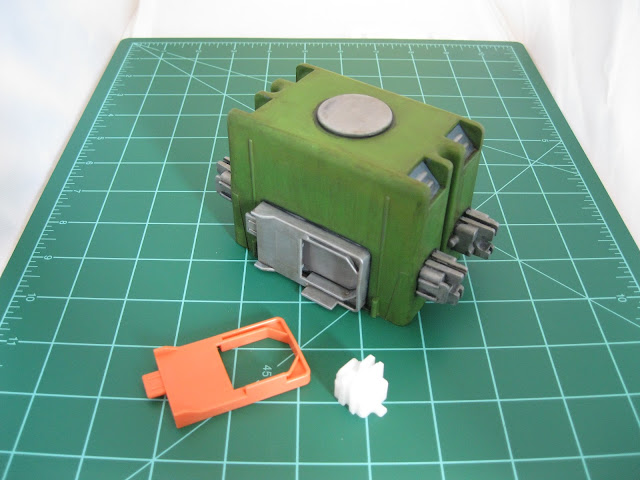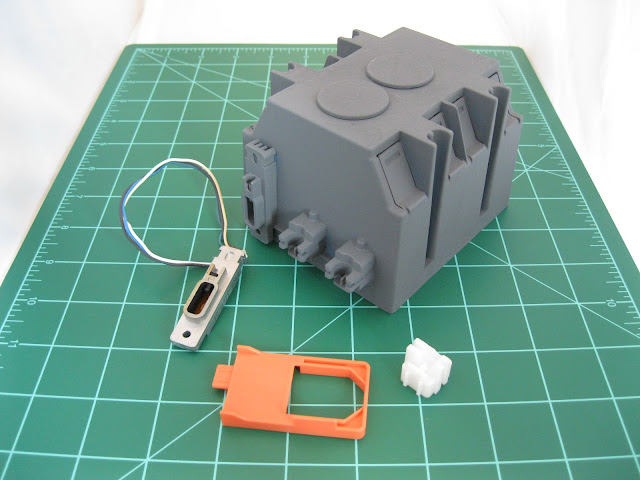Here's my first fully painted bunch of 15mm infantry figures intended for sci-fi wargames. These were actually completed after the first attempts at making terrain out of cardboard and electrical boxes, but before the second attempts.

What Company Made These Miniatures?
Critical Mass Games. These are the ones ordered back in November. I completed a test batch back in February and have used them for scale comparison shots ever since.
How Did These Get Painted?
I primed the figures with gray auto body primer. The base coat was a thinned down medium gray. Next was a blue-black wash. The final step was painting on details like the face plates and shoulder pads.
The bases are steel washers super glued to the integral bases that came with the figures. I textured the base with sand applied over watered down tacky glue. Once this was dry, the sand was colored with a mix of dark brown paint. tacky glue, and water. The mix also further secures the sand on to the base. I drybrushed on some linen paint to produce a sandy color and glued on a few pinches of static grass.
Why This Particular Paint Scheme?
Basically, I wanted to avoid the “Master Chief” look (no green with gold face plates) and the “Stormtrooper / Clone Trooper” look (no white or light gray). The test pieces I did in brown and khaki just didn't look good to me. So medium gray with a dark wash it is.

The colored shoulder pads to denote specialization isn't realistic nor is it intended to be. I just wanted something clearly visible at tabletop distances and didn't feel much like mucking around with coloring the bases.
What About Storage?
Not much to tell, really. The plastic box is part of a stackable storage container that I picked up years ago. The strips are magnetic material from Hobby Lobby. The strips tend to curl since the stuff comes in a roll. I ended up supergluing the ends down to keep them from popping up like seen in a couple of the images. The whole process only took a few minutes.

Any Lessons Learned?
This was my first experience with painting 15mm figures and with painting large numbers of figures in batches. Choosing a simple paint scheme that can be applied to multiple figures in steps enabled an efficient, assembly-line approach. Breaking down the job into batches was also critical. Each batch went quickly and rewarded effort by making progress easy to track.







